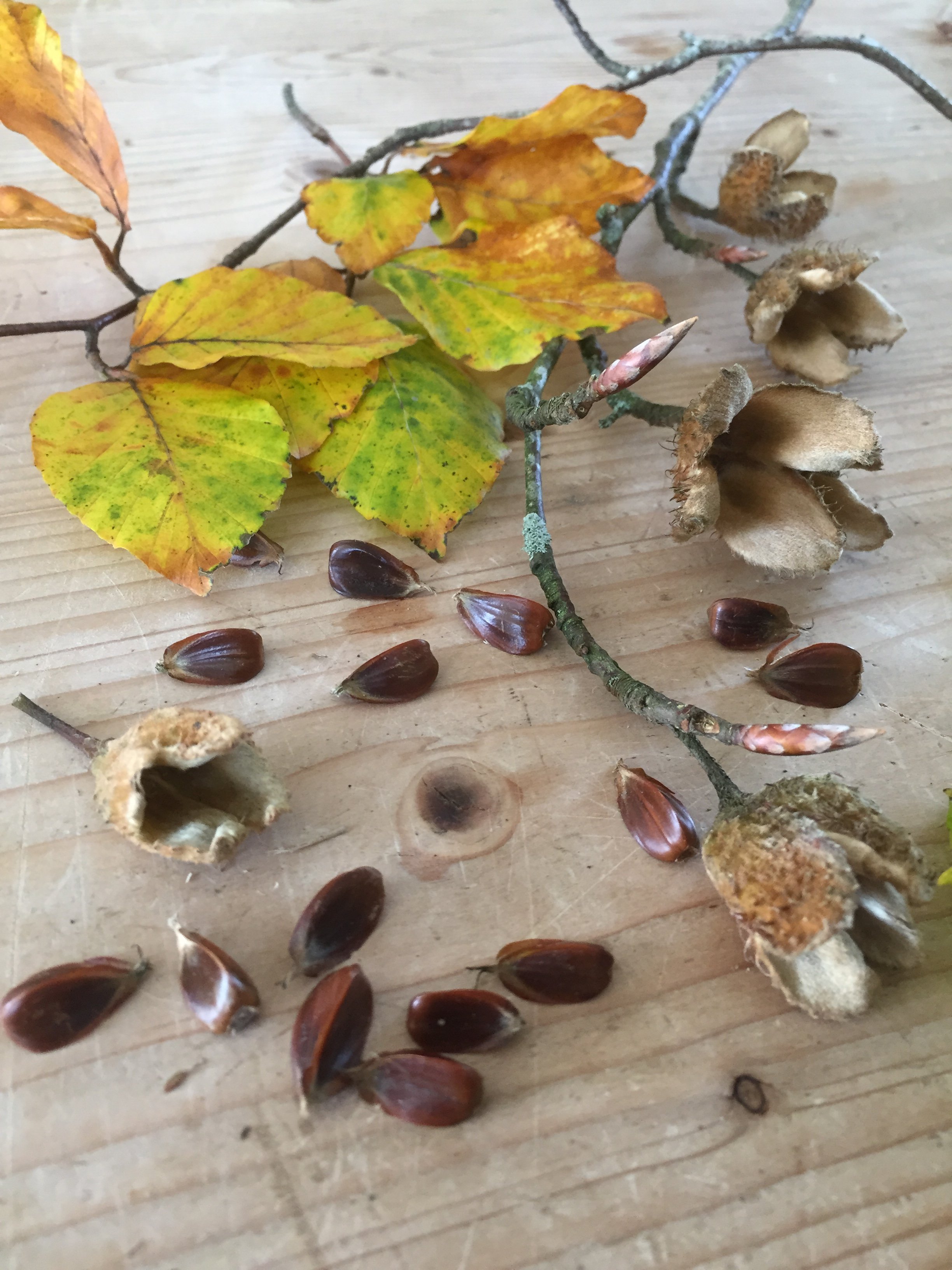
This is an abundant food source in years when the seed sets well, and it supports huge numbers of birds and mammals in Beech-dominated woodland. It’s true the seeds are small but it’s the numbers that are important. This year, locally, I’ve found a rough average of 30-40 per square metre under mature trees based on a few unscientific minutes of sampling. That works out at 30-40 million in just one square kilometre of forest. A quick literature search turned up figures as high as 800/m2 which is not far short of a billion nuts/km2. That’s a lot of bird food.
To be honest, they are not much use as food for humans because of their small size, the difficulty in finding them on a forest floor that is almost entirely beech-nut coloured and the fiddly process required to extract them from the shell. I can only include them here because I go through an annual ritual every autumn of finding at least a handful – just to remind myself of the taste (not bad but slightly bitter; nothing special) and as a way of finding out if it’s a good year. In some years almost all the shells are empty as the nuts have failed to develop properly and It’s easy to burn more calories trying to find a good one than you get back from eating it – though I see that as a good thing these days.
But in ‘mast’ years the forest floor is littered with them and I know it will be worth returning after the first spell of cold weather in the hope of finding flocks of Chaffinches and hopefully a few Bramblings. These years of abundance represent a communal attempt by the trees to outwit the multifarious hordes of seed raiders. Produce average numbers each year and they will be up to the task and consume the lot. But overwhelm them once in a while and they simply won’t be able to get through them all. It doesn’t need to work very often to be a very successful strategy in the life of a Beech tree.
[registration_form]
I have only ever eaten these once, not such a great taste and as Ian says rather afiddle to process, Chaffiches and Bramblings love them and essentially in many places are dependent on them in winter. Given how many Hawfinches seem to have come over this autumn perhaps they will be in those feeding flocks too— must pay more attention to beech trees this winter!
I disturbed a flock of 20 wood pigeons from a beech in our garden before the mast had fallen. They appeared to be eating the under-ripe mast on the tree.
My dad used to consume vast amounts of “Beech Nut” chewing gum when he was down the pit, he said it helped with the dust.
I remember it came in yellow and green packets, with a beech nut design,with I think, red leaves.
As a small child I used to think they were made from the real thing.
It all went tits up after the 84/5 strike.
I’d forgotten about the chewing gum. I used to spend my school dinner money on them. Little rectangular packets with about 6 pieces inside. No idea why they were called beech nut (and with a logo of beech leaves and nut) as no obvious connection with the tree.